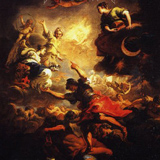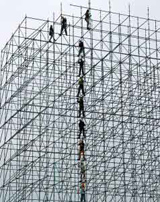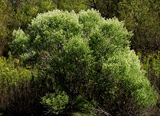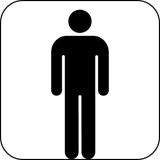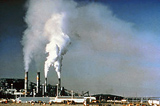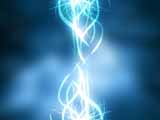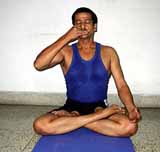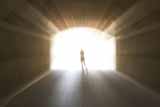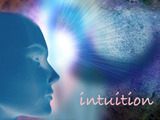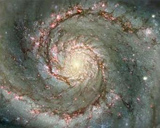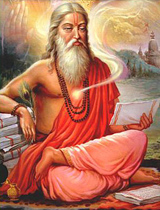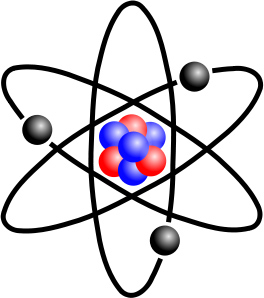Evolution
Beyond paradigms
Editor’s note
We are entering a world where all paradigms are collapsing. Money, politics, even health is now falling apart. We do not know what framework to lean on any more. We are now obliged to shift. But to what? Who can help us to find the right treatment for cancer or a cataract? Is it a statistical proof or is it something else? This article explores what is happening to us today.
There are several ways of looking at a phenomenon, be it a grain of sand or something inherently as complex as a human being. Depending upon our angle of vision, we understand things and build conceptual frameworks around this understanding. This conceptual framework is initially as tentative a structure as scaffoldings constructed for raising a building from the ground. With the passage of time, more and more data is collected as material to be used as building blocks. Each observable process used as a brick is cemented by ‘facts’ that are actually a mixture of raw data combined with reasoned or reasonable guesses to fill in the gaps. And so a house of theories is built with reason as its architect and senses the arch-mason. A paradigm is born and man is impelled to live in it.
A reverse process then starts. Man lends his belief and credence to the theoretical framework. Tied by conception’s noose, he can move freely only in the limits of that house. His power of observation and understanding and therefore his power of manipulation and change get limited to four walls. He observes what the walls make him observe, thereby strengthening his ‘limited’ beliefs, trapping him more and more in his own system to which he has lent credence, — scientific or otherwise. The master of the house becomes its slave. He is governed by the sensory mind and limited to analysable facts and reasoned guesses. So paradigms are born until….
Until one day someone dares to step out of this neat and comfortable house and breathe a fresher air. Or when someone perceptive enough observes cracks in the neatly plastered walls and finds new data that does not quite fit with these known processes and reasoned guesses. Or else, when an anomaly creeps in through the hard walls and one can no longer explain phenomena by measurable things. Or else, yet another man, a prisoner of the house in his body, takes a flight of fancy beyond the ceiling and his imagination brings him a new vision, a new way to understand and interpret these observable ‘facts’, ‘phenomena’ and ‘processes’.
New theories
Thus the paradigms are broken and new theories replace old ones, giving birth to another school of thought, another system of knowledge, another possibility of action and response to events, circumstances and all other observable phenomena that invade and invite us, that also challenge and allure. They test our limits of understanding and action even as they gradually allow us to expand, if not easily let go, beyond the frontiers of the ‘tried and tested’ formulas.
One finds this challenge and change of paradigms, theories and systems in every field of science, but perhaps nowhere do theories change so rapidly or else allow multiple approaches of understanding as in the fields involving human beings themselves. It has been said, and rightly so, that man holds within himself every secret and there is nothing upon earth inherently as complex as a human being. This complexity in man arises partly due to the nature of evolution that has led the journey of earth up to his emergence. But it also arises due to the nature of the world itself that gets reflected and reproduced in man in a miniature way. We are not merely ‘human’ but also something of the animal, the plant life and the life of uni-cellular organisms, the stone, the mineral, river and sea.
We carry these relics of our evolutionary past and bear the burden of their habits and the stamp of their memories in us. On the other hand, we believe the world is at once a material as well as a spiritual fact along with all else that lies in between. It is like an isthmus that connects the material reality to the spiritual. This, we must hasten to add, is not just a belief but also a fact of experience testified by mystics that have cut across the barriers of time, space, culture, education and personality. However, not only mystics but even some lay people have a passing glimpse, however brief, of the immense spiritual reality that stands behind the material façade of the universe. Besides these occasional glimpses, mankind is born with an almost instinctive and intuitive sense of the spiritual that pushes him perpetually to engage with it: either to seek it or deny it! Most men who are awakened in their thoughts have contemplated at some time or the other the spiritual side of life. Of course, they may not call it ‘spiritual’ but prefer other terms such as ‘existential angst’, ‘raison d’être’, God, Divine or whatever else. Names matter little but the seeking, however vague, is there, innate and inbuilt in man. We are almost programmed to seek the Beyond and probe what lies behind the material sheath covered by the physical envelope. It is as if man is destined, the chosen one, to unfold the spiritual element concealed within the material.
No paradigm of the world, let alone an understanding of man, is complete unless it takes into account this spiritual side and how it relates with the material aspect of existence. It is precisely because no theoretical framework has been able to accept, acknowledge, assimilate and integrate these two poles of the one Reality that man is never satisfied with any construct or system that can only be provisional. They can be, at best, brief resting grounds or tent houses in man’s epic climb, but not a permanent station. Man dwells in his mind like a child lost in the woods. He may be charmed and allured, frightened and terrified, happy or sad by the way he sees ‘Reality’ from his tent house, but he is born to seek the origin, the entrance and exit to the forest.
Therefore all mental theories are temporary and transient. After serving one brief hour they are replaced by new and fresh ones. Paradigms are and will be born and replaced by new paradigms as long as man sees Reality through the fragmented and distorted medium of his mind. It does not much matter whether we see it through the ‘eye of belief’ or the ‘eye of reason,’— we still see but a small fragment and never as it really and wholly is.
Before we talk about an integral model, it may be worthwhile looking at various paradigms that relate to ‘man’, which consequently have a bearing upon his state of health and illness.
A paradigm of health
The very first model that strikes our eyes is the one that modern allopathic medicine builds itself upon. It regards man as a physical body: his thoughts, emotions, will and impulsions are all the result of certain neuro-chemical processes in the brain. The physical body itself is regarded as a complex machine whose various functions are triggered ‘on’ and ‘off’ primarily by the genetic ‘switch’ and secondarily by a complex process of learning and adaptation involving the molecular memory.
There are certain advantages of looking at the human body in this way. We can separate and study each part, its components, constituents and its driving engines. Each step of this study moving from gross to subtler, from organs to molecular levels, allows us to manipulate and correct those parts that are malfunctioning; we can even change and replace them if they have gone beyond repair. Its ultimate triumph will be to replace every body part and the faulty gene. So far so good.
The one big disadvantage is that since any physical object will have its own eventual shelf-life, we will reach a point beyond which such a replacement will no longer be possible. Maybe we can push the age-limit to double its present possibility, to say 150 or even 200 years in exceptional cases, but we push it just a little further. Besides, even though one may live longer, the quality of life, the ‘joy factor’ that depends so much upon our psychological condition, will not change just because organs have been replaced or genetic ailments cured. We may even find ourselves in a strange predicament where all our friends and loved ones, those for whom the average person cherishes life, are dead and gone while we survive to bear the burden of grief in our hearts! Such a prolongation of life would be more a curse than a boon. A third factor is the commercial aspect of such therapies and their affordability. Lapped along with it will be the encumbrance that is often associated with such replacements, like the small print cautionary footnote that accompanies stock market deals that promise to make us rich. While it may benefit a few, for the majority it becomes an addictive play, a comfort in ‘numbers’ and for yet others a loss of whatever little one had. Fourthly, death will still always find its way through accidents, poisoning, pollution, environmental hazards, oxidative stress, genetic ‘errors’, radiation and other means that it will devise for the future, such as unexplained epidemics, mutant organisms, new illnesses, etc. Those who believe that gene therapies, organ transplant and stem cell treatments will grant us virtual immortality or improve the quality of life need to sober down and squarely face the facts, so to speak.
It may be of interest to note that in ancient India, a ‘technique’ or process was discovered for a complete overhaul of the body, a change of each and every cell (or at least a majority of them) through elaborate psychophysical processes involving certain occult elements, rejuvenating herbs and special forms of therapy. It was known as Kaaya-Kalpa or complete physical change. However, those involved in such practices noted that it worked only for a brief period and one cannot go beyond a certain number of such ‘cellular replacements’, if one may use a modern sounding term.
Lastly, and most importantly, this paradigm is neither wholly true nor satisfactory. It is not true that an organ functions just like a machine. The body organs learn, adapt and change through self-corrective processes, a possibility not yet seen in any machine. The body continues to grow and evolve and even replicate itself and replicate in ways where all that is created out of it has its own independent curve and growth. Such a thing is an impossible for any machine. A third important difference is the capacity of self-awareness, self-reflection, even self-transcendence, the ability to suspend and even change certain fixed processes of the body by sheer pressure of thought and will, something inconceivable for a machine. Finally, we have a big ‘explanatory gap’ between what ‘is’ (thoughts, feelings, consciousness) and what explains it (genes, neurons, chemicals) that this paradigm can never satisfy man for long.
That is why we see the winds of change blowing all over, looking for something beyond the mere physical and material explanation of things. The explanatory gap widens much more when we try to understand the mind and its processes such as cognition, intelligence, memory and even a thing as commonplace as ‘form perception’. At best, one knows where something happens in the brain and some molecular events associated with it, but not what the actual mechanisms are.
Man does not experience the world as a physical reality alone. We also experience, in some subjective and subtly objective dimension, the same physical phenomenon in other terms — emotionally, intellectually, symbolically, even occultly and spiritually. Each is a window glimpse and each opens the door to a different way of understanding our self and the world.
Dance of energy
Thus, we can understand our self and the world purely in terms of energy, as a dance of energy in time and the patterns thrown across the vast canvas of space. These patterns present themselves to our limited physical vision as a physical object, body or organ. The apparent stability or rigidity within fixed boundaries is due to the pattern repeating itself in a certain groove, like an old habit. This repetition of movement creates rhythms within rhythms that translate themselves into cycles of physiological functions. The ‘energy-dance’ appears solid to us through a dual process of ‘condensation of the energy’ on one side and the ‘sensory attunement’ to perceive these patterns in some fixed ways on the other side. The mind, conditioned through past experience to transcribe the ‘pattern’ in certain limited ways, fixes the ‘form’ into a ‘concrete solid image’.
Without going into further details of the process, according to this view, all illness (also like an evolutionary change but on another scale) is the result of a breaking-off of this pattern, a disordered flow of energy in the energy-body. This itself may arise either due to a sudden onrush of further energy, a depletion of energy, a blockage in the flow due to obstruction or ‘energy-knots’, ‘energy-kinks’ or also ‘energy-holes’ that suck and drain away the energy. It can also arise due to a sudden impact of another energy-form or a slow intrusion, an abrupt invasion of certain energy-particles whose sole action is to disrupt and create disorder. Equally, if we can learn the science and art of setting the energy-imbalance or the disordered flow-pattern right then eventually it will impress itself upon the gross physical form and the illness will dissolve and health restored. Much of homoeopathy, prānayāmā, reiki and prānic therapy too, is meant to work in this way.
The advantages of this approach are that it is relatively less expensive and when effective, can cure at a more radical level. The disadvantage is that is takes time, especially if the organ is anatomically damaged. Time is often crucial in these matters. Besides, since this science is subtle and deals with a realm that needs a special intuitive understanding, it is hard to evaluate and systematise it, especially since we are dealing with a fluid state of being. Besides, this too cannot give the final answer since there are so many ‘reasons’ for the flow to be disturbed. Even if one were to assiduously practise the methods of clearing the energy regularly, it would still not suffice because we swim in a sea of vibrations that are too complex for any individual’s constant control. Finally, even if we isolate and withdraw ourselves, eventually the world-play will ensure an individual’s disintegration at some point since our ‘individual’ body extends into the world and constantly receives from it. Sooner or later, it will give way, since the law of balance between the individual and the world-play will ultimately take over.
The energy-body is not all. The ancient yogis saw beyond the physical and the subtle energy-body, to a third and even a fourth and fifth body. Metaphysically and meta-psychologically, the ‘energy-body’ leaves an important question unanswered. Even if all is a dance of universal energy, a stream of consciousness flowing through endless time, then where does the sense of individuality come from? What defines and determines the boundaries for the cosmic dancer and creates the seemingly separate segments and steps in this process? The traditional answer given is that our ‘sense of individuality’ is an ‘illusion’. But calling it an ‘illusion’ does not answer the riddle; it only deepens it. What is the process of this ‘illusion’; what is the underlying ‘truth’ or ‘reality’ that throws itself as an illusion to our experience; why did this ‘illusion’ come into being? One thing is clear. While animals in general almost live in a group identity, the sense of ‘separateness’ and ‘distinctiveness’ seems to appear as the species rises in scale. Higher mammals, for example the horse, elephant, lion, dog and chimpanzee appear to behave as if they have some vague sense of ‘distinctiveness’. However, with man it becomes his hallmark, almost one of the stamps of his humanity. As man emerges out of the animal herd, he not only shows clear differences in physical features even within the same ‘stock’ but also differences of perception, understanding, thinking, feeling, values and the subsequent choices that he makes. Man is not driven by the instinct of the species alone but something more that allows space for reflection, conscious learning, in other words choice. It may be safely inferred that it is the development of mind that creates this individuality. Seers and mystics of old saw in the mind the principle of differentiation that gives birth to distinctiveness and separate forms. Though each ‘separate element’ has the same basic constituents as any other element, the distinctiveness is created by varying the combination of the one Infinite Consciousness-Energy that has infinite possibilities and potential within it.
The mental body
The mental body is therefore the body or sheath composed of our thoughts, feelings, will, in fact all ‘cognate experiences‘ that go into the making of what we call ‘myself’. When the mental body is harmonious and healthy, when our psychological constitution strong and stable, our choices are beautiful and balanced, then our life is naturally the expression of a happy rhythm: moderate and avoiding excesses of any kind. On the other hand, any imbalance in the mental body reflects itself in a want of harmony in the rhythm of life-energy whose end-result is an ‘irritation’ of organs due to overdrive or a ‘shrivelling’ due to lack of stimulation or blockages. We can compare it to an electrical current in that it is unable to pass through the wiring of a house because the switches are faulty. The mind and its constituent elements (thoughts, feelings, will, conscious desire, etc.) are the switches that allow the electric current (the vital energy) to flow in this or that direction. Of course, we find that for many the switches are automatic. Like an animal driven by instinct, our thoughts, feelings, will are driven habitually and mechanically. Such people, though lower in scale of mental development, still maintain a fairly good natural health (rather like an animal does), unless they are corrupted by civilisational diseases such as unhealthy diet, tobacco, alcohol, etc. In that case, the deterioration is often fast because the mind is not sufficiently developed to bring in forces to counteract and correct the imbalance. The means generally used to work upon the mental body are education, counselling, cognitive therapy, neuro-linguistic programming (NLP) and a host of other therapies. However, there are other less used methods that are beginning to surface, like new dawns emerging from the shadows of night.
Intuition
Thus far it is easier to understand. But the yogi extends further. His range passes beyond the mind to summits where mind itself is born. In their search for the ultimate cause, the original source and womb of everything, these ‘seers of truth’ went further. Abandoning analysis, the crutch that mind uses to understand reality, they found and developed other ways and a better, less fallible means of comprehension. It is a mode of knowledge that in a sense is concealed and reflected in all activities of nature although nowhere does it find full fruition. They called it ‘Intuition’. intuition is not clairvoyance, telepathy, etc., which are more of a derivative nature. To a degree, intuition refers to the ‘wisdom and will’, the ‘infallible knowledge and power’ that work in the depths of nature. Superficially, this ‘wisdom and will’ are reflected in the spontaneous cosmic order that is constantly seen emerging out of chaos in the universal play. It is the idea-force, the ‘knowledge-power’ that drives each species in relation with the whole so that the cosmic balance is not disturbed in too drastic and dramatic a way. Of course, it allows and even enjoys great variation and freedom in the cosmic play, so our limited human mind is always haunted or thrilled (depending upon how we look at it) by the sense of the unpredictable and the incalculable. This adds to the ‘joy’ of the ‘play’ making it as real in the fields of time and space as could be possible to a witness-spectator consciousness. But the game of hazards and conquests, victory and failure is played within certain limits, however vast these limits may appear to our limited human mind. These ‘cosmic limits’ that are fixed and surrounded by an Infinite Consciousness-Force are known as the cosmic ignorance in spiritual terms. It is ignorance in the sense that its knowledge and power are limited, the limits of each individual element predetermined in a certain sense (otherwise there would be no separate ‘players’ at all!). The unfolding of this play, in terms of time is called ‘evolution‘, which makes its way through all risks and dangers, ‘chances’ and ‘accidents’, favourable and obstructing forces. The cosmic mind (and obviously the individual human mind) is aware only of certain forces and elements that are currently in the field; it is not aware of the ‘guiding wisdom’, ‘the absolute power’ that surrounds, conducts and directs the play. It is only when we step out of the limits of the rational-analytical (human) mind that we awaken to intuition. It is this intuition, like a ray of light thrown from a powerful torch that bridges the chasm of ignorance and gives us a flash glimpse of this tremendous knowledge and power that is concealed behind and within the immense façade of the universe.
The implications of this truth are many. First of all, we can begin to see pleasure and pain, happiness and suffering, life and death, health and illness in a new light, thus creating a radical paradigm shift within ourselves. Pain, suffering, illness, even death, will be seen as an evolutionary passage that the ‘wisdom’ chooses as a step for its unfolding in the material universe. Crises will be seen as a challenge leading us through a narrow doorway towards a ‘foreseen’ liberation. The world itself will wear the aspect of a ‘play of forces’ that push humanity and creation towards an eventually predetermined goal, now concealed to our sight. We can then, by choice, become conscious players in the cosmic game rather than being mere unconscious tools of dubious forces. Aware of the forces that act from behind the scene and their law of working, we shall exercise far greater power and control over life and destiny.
There is only one great difficulty in ‘this paradigm’ if we may say so. It is that we have to find a way to step out of the limits of the human mind and, guided by a growing intuition, step into the true, the right and the vast as the ancient seers described this all-comprehending, all-determining, all-revealing, infinite Consciousness-Force that is embedded within each and every particle of this creation. Yet it is given to man to manifest It openly, consciously and fully in and through his life. This is no mean and easy task and needs a special preparation and a special process. It is to this ‘special process’, of embodying a greater Truth-Consciousness, that Sri Aurobindo gave the name ‘Integral Yoga’. It may not be possible for man, as he is presently constituted, to enter into this ‘paradigm’ that transcends thought and cognition as much as or even more than thought, reason and analysis can transcend an animal creation driven by herd instinct and unconscious drives and impulses. However, this is only an initial disadvantage, as is common when anything new is started. We surmise that the dissatisfaction of man with all the present paradigms is essentially, deep down, a dissatisfaction with his own being. It is one of the indications that he wants to transcend the mental frame in which he is presently caught. He seeks something else, something more, but is not clear about what exactly he needs. It is this ‘need’ that makes him increasingly restless, driving him now onto roads of despair or revolt, branching into various philosophies, sects, religions, ideologies, schools of thought, paradigms and all those halfway homes that man builds as brief resting places in his epic climb to discover his own origin and source. But he cannot be content merely to discover his ‘immediate origin, the ‘origin of the species’. He is driven by a hidden intuition to seek the very origin and source from which all things and even space and time are born. This is the grand reconciliation he seeks, the great mystery he is set to solve, and the riddle he must answer to his utmost satisfaction. Sooner or later, this intuition, pushing him and all his science and art and thought, is bound to lead him on to this ‘paradigm of the future’. Even if in the beginning, there are only a few, this approach will gain momentum and a day must come when the boundaries of our ignorance will recede to a point where only a thin line will need to be crossed in a leap of faith or leap of intuition.
There is, however, another difficulty with this paradigm. It is not an ideative but practical difficulty. Even though the source of all things is an unprecedented power and an all-comprehending knowledge, it is not easy to apply it to the human body and mind and cure it of its ills. It is something akin to having all knowledge about the nuclear energy trapped in an atom and the possibility of releasing it ‘under certain conditions’, and actually turning it into a practical reality.
The conditions
Here too, the analogy itself suggests the solution. There has to be first a group of humanity that recognises this possibility, logically, intuitively or by whatever means. Next, the conditions have to be discovered and stated for realising and turning this possibility into an actuality. At a third stage, the application has to be tried out first in a few ‘human samples’ willing to fulfil the ‘conditions’. Finally, once successfully applied in a few, it can be extended to others. This extension is bound to gain momentum through the morphogenetic resonance and ripple effect till a critical mass is reached. Once that happens, the balance will tip over in favour of this new paradigm. We may say, from experience, that as of now this grand divine experience is an experiment in the laboratory of earth and is in its third and fourth phase while the fifth and last awaits its hour.
(To be continued)
Dr. Alok Pandey is a doctor practising at the Sri Aurobindo Ashram.
Share with us (Comments, contributions, opinions)
When reproducing this feature, please credit NAMAH, and give the byline. Please send us cuttings.
